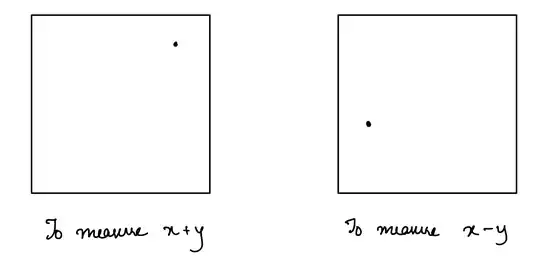I propose the following thought experiment:
Suppose we have a beam of identically prepared electrons that is splits into two. The first goes through detector A that detects the $x+y$ where $x$ is the coordinate along x direction and $y$ is the coordinate along the $y$ direction. Then, we measure the difference of the momenta of the electrons in the $x$ and $y$ directions i.e. $p_{x}-p_{y}$. Then, according to the postulates of quantum mechanics, we can measure the both quantities to arbitrary precision since $$ [x+y, p_{x}-p_{y}]=[x,p_{x}]-[y,p_{y}]=0$$ The second beam of electrons is subjected to a similar measurement by a detector B but this time we measure $x-y$ and then measure the sum of momenta i.e. $p_{x}+p_{y}$. Then, again we can measure $x-y$ and $p_{x}+p_{y}$ to arbitrary precision because $$ [x-y, p_{x}+p_{y}]=[x,p_{x}]-[y,p_{y}]=0$$ Then, adding the results of the measurements we have $(x+y)+(x-y)=2x$ and then $(p_{x}-p_{y})+(p_{x}-p_{y})=2p_{x}$. Both of which, $x$ and $p_{x}$ can be measured to arbitrary precision thus violating the uncertainty principle. If on the other hand, we carry out this experiment and find that we are not able to measure the above quantities to arbitrary precision then it follows that the postulates of quantum mechanics do not correctly predict the outcome of the experiment in the sense that the commutator vanishes but we can't measure the quantities to arbitrary precision.
Does this mean that the postulates of quantum mechanics are inconsistent? (I certainly don't hope so!)
